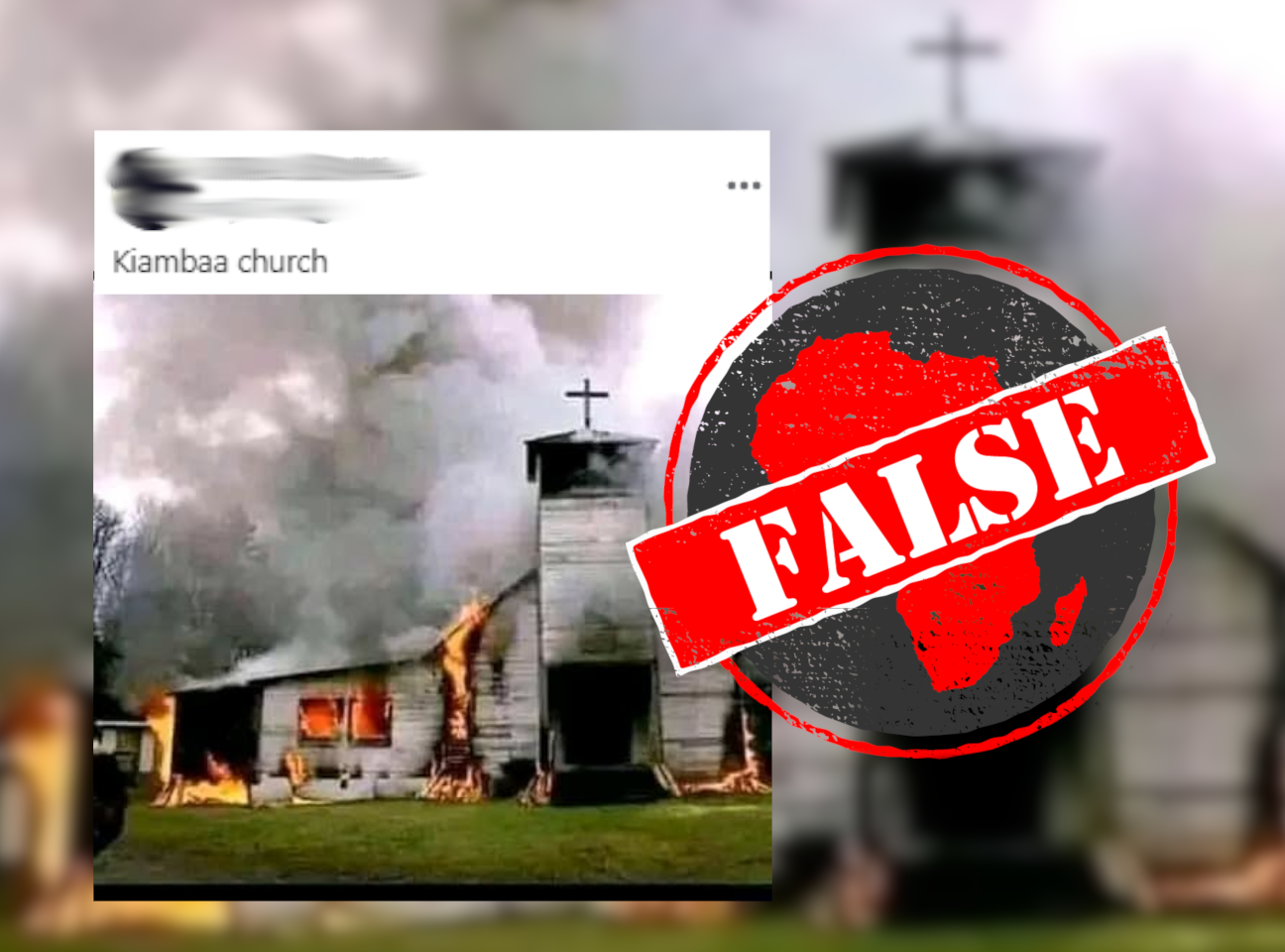A photo of a burning church posted on a Kenyan Facebook page with over 42,000 followers is captioned “Kiambaa church”.
In Kenya this would be understood to reference the church which was burned down in January 2008 during post-election violence after the December 2007 elections. At least 29 people died in or as a result of the fire.
The church was in the village of Kiambaa in Eldoret, Uasin Gishu county, to the northwest of the capital Nairobi.
Reference to the church is used as a reminder of the deadly violence and as a political dog whistle targeting deputy president William Ruto. Ruto was accused at the International Criminal Court of masterminding the violence. The case at the ICC was terminated in April 2016.
The photo of the burning church was also posted in two public groups in April 2022 as Ruto stepped up his presidential campaign for the August general elections.
But does this photo show the Kiambaa church that was burned down in 2008? We checked.

Photo from the US
Using reverse image search we traced the photo to the online art community Deviantart which features artwork, videography and photography.
According to the caption the photo shows an Indian Shaker church in Tulalip in the US state of Washington. The metadata shows the photo was taken on 20 January 2008 – coincidentally the same month that the Kiambaa church was set alight.
We searched with the key words “Indian Shaker Church in Tulalip, Washington” and found a photo of the church before it burned down, published by a local public library archive. The “notes” to the photo end: “The structure was destroyed by a fire in 2008.”
We also found a YouTube video captioned “The Burning of Tulalip 1910 Indian Shaker Church”. It shows both historical photos of the church, as well as it burning down. Text at the end of the video reads: “The Old 1910 Shaker Church was burnt down due to unrepairable structural deterioration … The church was burnt down on January 20, 2008.”
This photo of a burning church was not taken in Kenya.
Republish our content for free
For publishers: what to do if your post is rated false
A fact-checker has rated your Facebook or Instagram post as “false”, “altered”, “partly false” or “missing context”. This could have serious consequences. What do you do?
Click on our guide for the steps you should follow.
Publishers guideAfrica Check teams up with Facebook
Africa Check is a partner in Meta's third-party fact-checking programme to help stop the spread of false information on social media.
The content we rate as “false” will be downgraded on Facebook and Instagram. This means fewer people will see it.
You can also help identify false information on Facebook. This guide explains how.


Add new comment